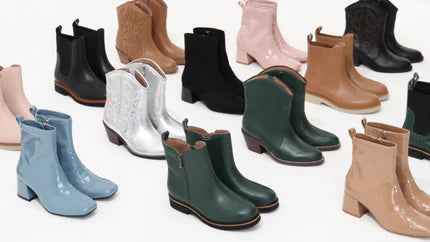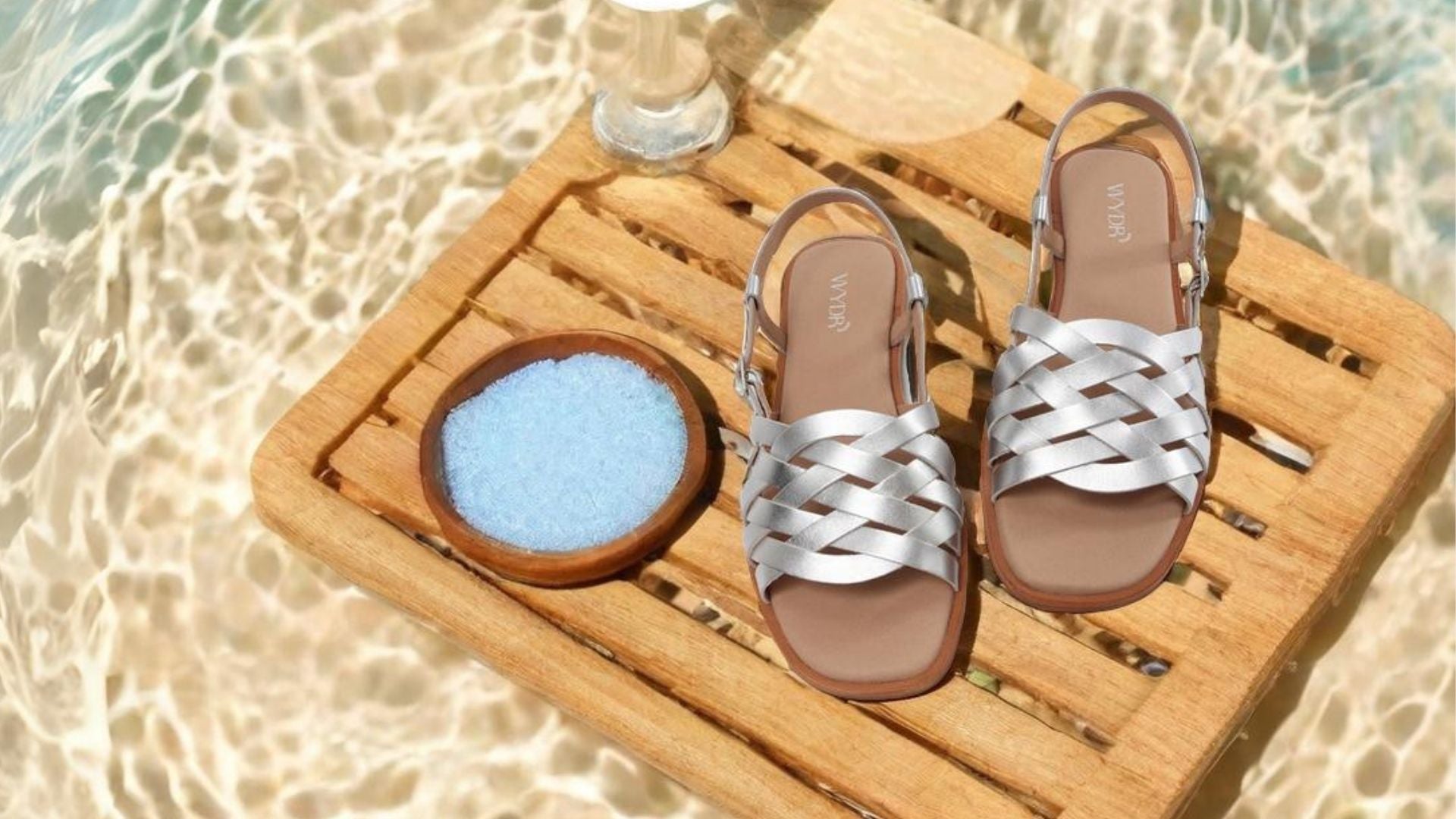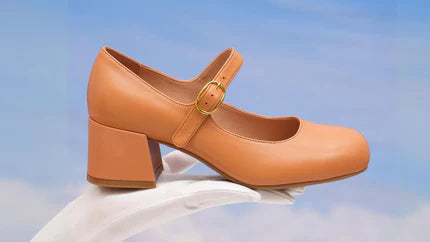Shoes that fit well don't just feel good—they help your whole body feel aligned and balanced. That's where wide shoes come in, giving your toes the room they need to spread out, which can prevent a host of problems caused by cramped footwear. Many of us are used to shoes that pinch, but what we might not realize is how much this affects our overall posture and foot health. By choosing wide shoes, you're supporting your body from the foundation up. Read on to see why a wider fit could be the answer to a more comfortable and healthy stride.
How Do Your Feet Influence Your Posture?
When it comes to maintaining good posture, your feet are more influential than you might realize. They are the foundation that supports the weight of your entire body, and any issues at this level can reverberate up through your whole skeletal structure.
Your Feet Keep You Steady
Your feet help determine how you stand and move. If your foot arches are too flat or too high, for example, they can lead to an imbalance that affects your ankles, knees, hips, and spine. This can cause a chain reaction, altering your posture and potentially leading to discomfort and pain.
Gait Patterns and Their Impact on Posture
The way you walk, known as your gait, is directly influenced by the shape, condition, and position of your feet. A balanced, neutral gait promotes good posture. However, if your gait is off due to foot problems, it can throw your posture out of alignment. Over time, this can result in complications like lower back pain or shoulder strain.
Strong Foot Muscles Support Good Alignment
Foot strength also plays a part in posture. Strong feet are better at supporting your body's weight and can help you maintain better control over your movements. Weak foot muscles, on the other hand, might not hold your foot arches in the right position, contributing to postural misalignment.
Your feet set the stage for the rest of your body. When they're functioning well, they can help you hold yourself correctly and move efficiently. Paying attention to foot health, including choosing the right shoes and addressing any foot pain or irregularities, is crucial for keeping your posture straight and preventing a host of other related issues.

Can the Right Shoes Really Boost Your Posture and Foot Health?
Yes, the shoes you wear play a significant role in supporting your posture and keeping your feet healthy. Here's how:
Aligning Your Steps
Your entire body is connected, so when your feet are off-balance due to poor footwear choices, it can throw off your whole posture. The right pair of shoes provides a solid base that helps keep everything from your ankles to your hips and back in proper alignment.
Shock Absorption Matters
Shoes with good cushioning absorb the impact of your steps, which spares your joints from extra stress. And when shoes have the right kind of support, they prevent your wide feet from rolling too far inward or outward, which is crucial for standing straight and not putting undue strain on other parts of your body.
Wide Shoes with Enough Space for Healthy Movement
When your shoes fit well, with wide toe boxes for your toes to move naturally, your balance improves. This can lead to better posture because you're walking as nature intended, without being squeezed into a tight space that can alter your gait and hurt your feet over time.
Customized Support Where Needed
If you have specific foot conditions, wearing wide shoes with enough support can make a world of difference. They provide support where you need it most, helping to correct your stance and relieve discomfort.
The bottom line is that the right shoes do more than just look good—they're a vital part of your posture and foot health. Think of them as a tool that helps keep your body working smoothly, avoiding unnecessary pain and complications down the road.
What Happens to Our Feet in Traditional Shoes
Traditional shoes have a reputation for style, but they can often be the arch-nemesis of foot health. Let's walk through how some classic shoe designs might not be doing your feet any favors:
- Cramped Quarters: Many conventional shoes are designed with aesthetic rather than anatomical principles in mind. They tend to narrow at the front, forcing toes into an unnaturally tight space. Over time, this can lead to deformities like bunions or overlapping toes.
- A Tough Foundation: Hard soles and minimal cushioning are another hallmark of traditional footwear. While they might endure miles of wear, they don't absorb shock well. This means every step sends jolts through your feet up into your spine, potentially messing with your posture and causing pain.
- The Heel Effect: High heels tip the balance forward, putting unnatural pressure on the balls of your feet. This can lead to a condition called metatarsalgia, a painful inflammation of the nerves and joints in the forefoot.
- Lack of Support: A lot of standard shoes skimp on arch support, which is crucial for proper foot function. Without it, you're more likely to develop conditions like plantar fasciitis, where the band of tissue that runs along the bottom of your foot becomes inflamed.
- The Squeeze Play: Tight-fitting shoes can restrict blood flow to your feet, leading to numbness and swelling. If your shoes leave red marks or impressions on your feet, that's a sign they're too constrictive.
It's clear that while traditional shoes might win points for fashion, they often lose when it comes to fostering healthy feet and a good posture. When shopping for new shoes, it's important to find the balance between style and comfort, ensuring your choice promotes foot health and supports your body from the ground up.

Why You Should Care About Wide Toe Boxes
When you're shoe shopping, there's a detail that deserves more attention than it typically gets: the width of the toe box. Here's why prioritizing wide toe box shoes is something you should consider:
- Let Your Toes Breathe: Your toes are designed to spread out and grip as you walk. A wide toe box provides the space necessary for this natural movement, reducing the risk of foot problems.
- Keep Foot Troubles at Bay: Crowded toes can lead to issues like bunions, hammertoes, and ingrown toenails. Wide toe boxes help prevent these conditions by allowing your toes to lie flat and not overlap or become compressed.
- All-Day Comfort: Ever felt that pinching sensation at the front of your shoes by the end of the day? A wider toe box can eliminate that discomfort, giving your toes the liberty to move freely without constriction.
- Stay Steady on Your Feet: With more area to spread, your toes can better help you balance. This is especially important during physical activity or for those with balance concerns.
- Healthier Feet Over Time: Consistently wearing shoes with narrow toe boxes can cause permanent changes to the shape and structure of your feet. In contrast, a wide toe box can contribute to the long-term health of your feet by maintaining their natural shape.
Opting for shoes with wide toe boxes isn't just about comfort—it's a decision to take care of your overall foot health. When shopping for new shoes, remember that your toes need space not just to 'party' but to maintain their natural position and function.

How Wide Shoes Improve Your Foot Health and Posture
Wide shoes are not just a niche for those with broader feet; they represent a fundamental aspect of foot care that can enhance our posture, our comfort, and ultimately our health. Here's why giving your feet more room with wide shoes is a big win:
1. Even Weight Distribution for Better Posture:
Wide shoes provide a stable base that helps distribute your body weight more evenly. This means when you stand or walk, you're not putting undue pressure on any one part of your foot. This balanced distribution is key for maintaining good posture, as it keeps your body aligned and prevents the compensations that might lead to back or hip pain.
2. Room to Move Prevents Deformities:
A wide toe box means there’s enough space for your toes to lay flat and not be squished together. When toes have room to move, there's less risk of painful bunions and hammertoes developing. These deformities are not just painful but can also affect the way you walk, which in turn can mess with your posture.
3. Healthy Blood Flow from Not Being Constricted:
Tight shoes can impair circulation by constricting the blood vessels in your feet. In contrast, wide shoes allow for proper blood flow, which is crucial for tissue health and preventing swelling that can affect your gait and comfort throughout the day.
4. Reduced Risk of Nerve Pain and Skin Issues:
Shoes that are too narrow can pinch nerves, leading to conditions like neuromas, which cause pain and tingling. They can also create friction that leads to corns and calluses. Wide shoes help you steer clear of these issues, making every step pain-free.
5. Suitable for Orthotic Inserts if Needed:
If you require custom orthotics for foot ailments, wide shoes often have the extra depth and width needed to accommodate them without squeezing your feet. This ensures that the orthotics can do their job correctly, supporting your arches and contributing to better overall posture.
6. Long-Term Foot Health:
Wearing shoes that fit properly, including having a wide enough toe box, means you're less likely to face many common foot problems down the line. This preventative measure keeps the natural structure of your feet intact, promoting overall foot health.
While wide shoes might seem like a small detail, they can have a substantial impact on keeping your foundation — your feet — healthy and comfortable, which is essential for good posture and well-being.
Choose Wide Shoes for Healthier Feet
Picking wide shoes is a smart move for anyone looking to improve their foot comfort and overall body health. With today's online shopping convenience, finding the right wide shoes is easier than ever. Just remember, roomy shoes can lead to less pain and more comfortable walks. So why wait? Make the switch to wide shoes and give your feet the comfort they deserve every step of the way.



